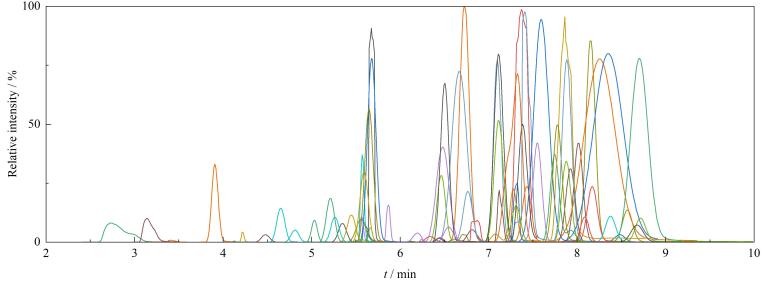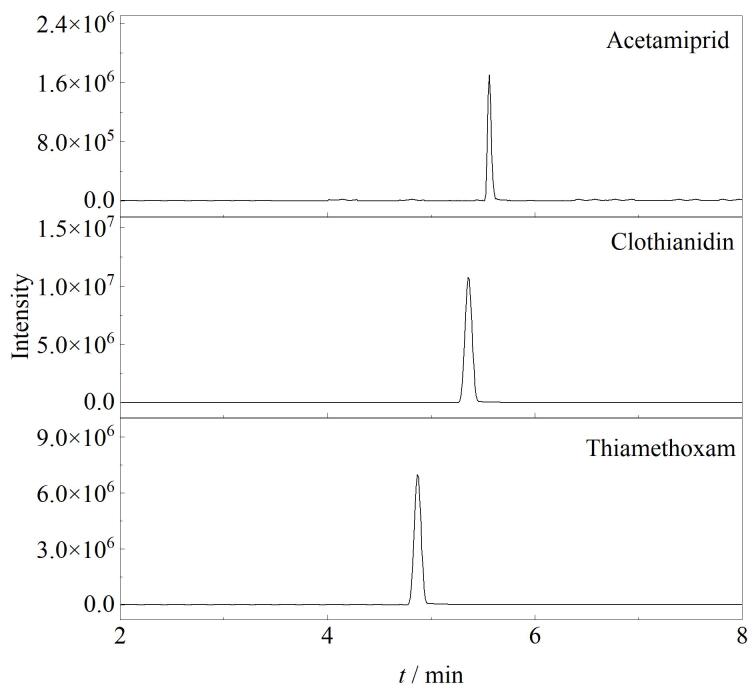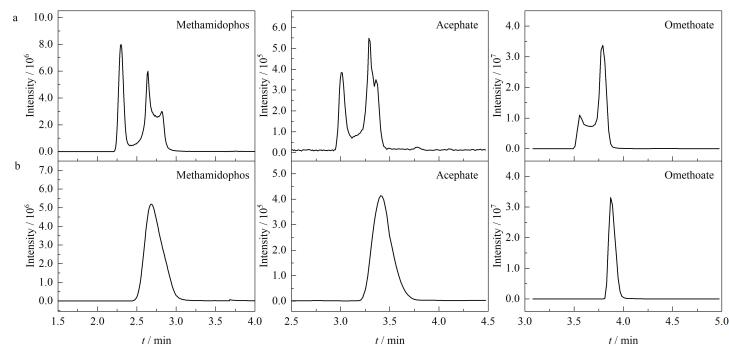[Determination of 79 pesticide residues in fruits and vegetables by QuEChERS-ultra performance liquid chromatography-tandem mass spectrometry].
Abstract
Pesticide residues in fruits and vegetables are becoming a serious issue. These residues can affect the quality of agricultural products and people's health. Therefore, it has become crucial to effectively monitor and control pesticide residues in the food safety field. In this study, a rapid and effective QuEChERS-ultra performance liquid chromatography-tandem mass spectrometry (QuEChERS-UPLC-MS/MS) method was established for the simultaneous determination of 79 typical pesticides in vegetables and fruits, including organophosphates, carbamates, and pyrethroids. The pretreatment, UPLC, and MS/MS conditions were optimized. The fruit and vegetable samples were extracted with frozen acetonitrile after pulverization and homogenization, cleaned up by the QuEChERS method, filtered through a centrifugal membrane, and analyzed by UPLC-MS/MS. The separation was carried out on an ACQUITY UPLC HSS T3 column (100 mm×2.1 mm, 1.8 μm) with gradient elution. The aqueous and organic phases were water-methanol (98∶2, v/v) and methanol-water (98∶2, v/v) respectively, both with 5 mmol/L ammonium acetate and 0.1% formic acid. A triple quadrupole mass spectrometer was used in positive-ion electrospray ionization (ESI+) scanning mode, with target pesticide residues quantified using the matrix-matched standard-curve method. The results showed that under the optimized conditions, the 79 target compounds were determined with good linearities in the range of 0.1-200 μg/L, and the correlation coefficients (r) were all greater than 0.990. The limits of detection (LODs) and limits of quantification (LOQs) of the 79 compounds were in the range of 0.01-4.0 μg/kg and 0.03-13.0 μg/kg. The recoveries at three spiked levels ranged from 78.2% to 119.8%, with relative standard deviations (RSDs) all less than 15.8%. The established method was successfully applied to 80 samples of fruits and vegetables from Hunan province. As a result, 19 pesticides were detected in 31 samples, and thiamethoxam, acetamiprid and clothianidin being the most highly detected with a content range of 0.012-2.62 mg/kg; According to the data of the Hunan province survey yearbook, the percentages of acceptable daily intake (%ADI) for chronic dietary exposure of the detected neonicotinoid insecticides (thiamethoxam and clothianidin) have been calculated. The results indicate that the %ADI of clothianidin in fruits and vegetables ranged from 5.74% to 0.36%, respectively, and the %ADI of thiamethoxam in fruits and vegetables ranged from 0.40% to 19.50%. The %ADI of both pesticides were found to be less than 100%, indicating they are within acceptable limits. The method is simple, sensitive, accurate, and suitable for the simultaneous determination of multiple pesticide residues in fruits and vegetables.




 求助内容:
求助内容: 应助结果提醒方式:
应助结果提醒方式:


